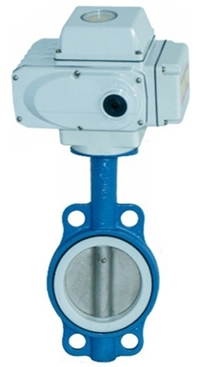What Causes the Leakage of Electric Butterfly Valve?
Electric actuated butterfly valve is a kind of valve commonly used in petrochemical, shipbuilding, power station, metallurgy, pharmaceutical and light industry industries. It is mainly used to cut off or control the medium in the pipeline. In the long-term use of electric butterfly valves, it is inevitable that various faults will be encountered, and leakage is one of the more common faults. This article mainly introduces the causes of electric butterfly valve leakage and the corresponding treatment methods.
Generally speaking, there are three main types of leakage of electric butterfly valves, namely external leakage at the packing, leakage at the sealing surface and leakage at the flange connection.
Main reasons for the leakage at the packing of the electric butterfly valve
 The force used by the user during operation is too large, so we must use normal force to rotate the valve evenly during operation, and do not use excessive force.
The force used by the user during operation is too large, so we must use normal force to rotate the valve evenly during operation, and do not use excessive force.- When packing, the gland bolts are not fully tightened, resulting in leakage, so we only need to tighten the packing bolts evenly.
Main reasons for the leakage at the sealing surface of the electric butterfly valve
- The electric butterfly valve is not closed tightly, which leads to the leakage of the sealing surface. If you encounter this problem, you only need to re-adjust the bolts on the electric actuator.
- Since the butterfly valve has not been used for a long time, some dirt has accumulated on the sealing surface, and it cannot be completely closed, resulting in leakage. We only need to use high-speed fluid to flush the sealing surface.
- The sealing surface is damaged, resulting in uneven sealing, which requires us to re-grind the sealing surface and adjust the gasket for compensation.
Reasons for leakage at the flange connection structure of the electric butterfly valve
- The studs are not tightened or the tightening force is uneven, resulting in leakage. The solution is to re-tighten the bolts with uniform force.
- Flange gaskets are aged or damaged due to long-term use. The solution is to replace new flange gaskets.
- The selection of flange gaskets is not appropriate. For the selection of flange gaskets, appropriate gasket materials should be selected according to the working conditions. If the selection is not appropriate, leakage will inevitably occur after a period of time.
ATO provides 2", 2-1-2", 3", 4", 5", 6", 8", 10", 12", 14" and 16" electric actuated butterfly valves for your choices. Buy now!

